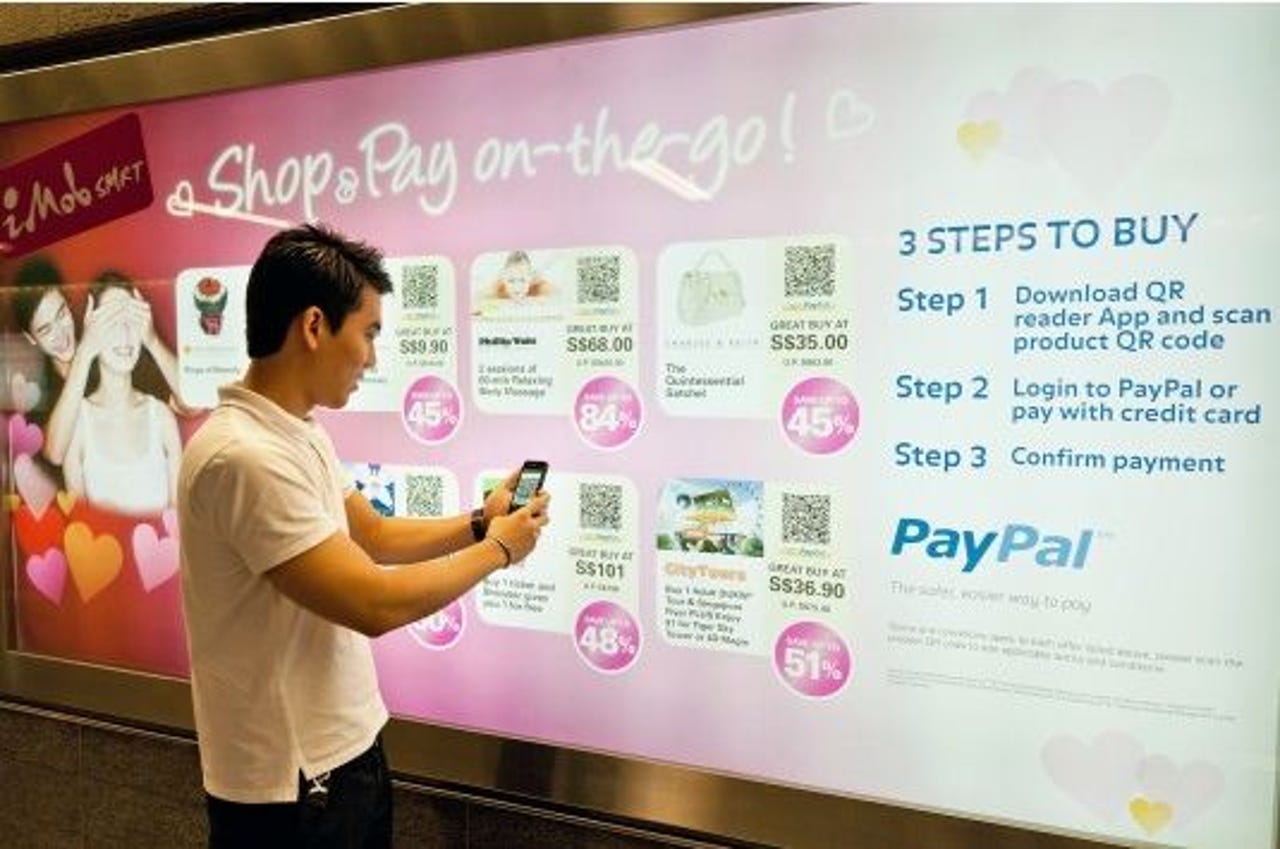Mobile-savvy Asia primed for virtual stores

Asia region is prime for virtual stores, which have been surfacing this year, as most of the population here are already receptive to e-commerce, value convenience, are mobile-savvy and can look to these "semi-physical" stores to enhance their shopping experience.
Unlike digital and online stores, virtual stores exist in the physical world but products sold are not physically available during the shopping experience, remarked Aapo Markkanen, senior analyst of devices, applications and content at ABI Research.

Instead, retailers make use of mobile technology--specifically, QR codes--to enhance the shopping experience in these stores, he explained.
Technology also enables retailers to collect customer orders and deliver the products directly to customers, he said.
Some Asian cities already have rolled out virtual stores. U.K. retailer Tesco, for instance, last year launched virtual shelves in South Korea's subway stations under its HomePlus brand, while PayPal in February rolled out a trial in Singapore's MRT stations allowing consumers to scan QR codes to purchase products displayed on billboards.
Chinese e-commerce giant, Yihaodian, in October launched a variant of Tesco and PayPal's virtual stores by making use of blank city spaces around the country and augmented reality technologyto allow customers to shop virtually and have their goods delivered to their homes.
Suits Asia's young, e-commerce savvy population
The concept of virtual stores is set to gain traction in this region because its inhabitants already are receptive to e-commerce, so the bar to adoption will not be too high, Markkanen explained.
Virtual shops allow shoppers to save time in comparison to traditional shopping experiences, which is beneficial in Asia where large cities exist and long commutes by passengers are prevalent, he added.
Spike Choo, principal consultant of ICT Practice at Frost & Sullivan Asia-Pacific, agreed, noting this form of virtual shopping mimics "a typical trip to the groceries or local minimart", but provides a more convenient way for busy commuters to replenish their daily necessities while commuting between work and home.
Furthermore, this service will appeal to young adults between the ages of 20 and 35 who value convenience and are already familiar with online and mobile shopping, Choo noted.
Markkanen pointed out it also could add some "hands-on" feel to the digital shopping experience, filling a gap which many online shoppers miss out on when they make online purchases.
For retailers, therefore, virtual shopping may encourage more impulse purchases since shoppers have a better idea and feel of the products, he pointed out.
Choo added the high costs of real estate in key Asian cities such as Singapore, Hong Kong and Jakarta will also encourage more retailers to explore virtual retailing, which requires less physical space than traditional shops.
"It can lower business costs [for them] substantially while extending their reach to some of the most valuable customer segments," he said.
User experience, instant gratification needed for success
To attract targeted customers, retailers should ensure virtual stores mimic real-life shopping experience as much as possible, Choo advised. For example, images displayed should be the actual size of the product and labeled clearly to enable a shopper to confirm the purchase as fast as possible, he noted.
It is also important for retailers to ensure the smartphone application used in the virtual store can continue to work amid intermittent and sporadic mobile data connectivity, especially for virtual shopping walls installed in subways and bus terminals, he added.
Markkenen noted store logistics should also be effective enough to permit same-day or next-day delivery of purchases.
In addition, Choo said, logistics should offer flexible home delivery, especially same-day delivery to the home or office, and support flexible payment models based on local market practices such as cash-on-delivery.